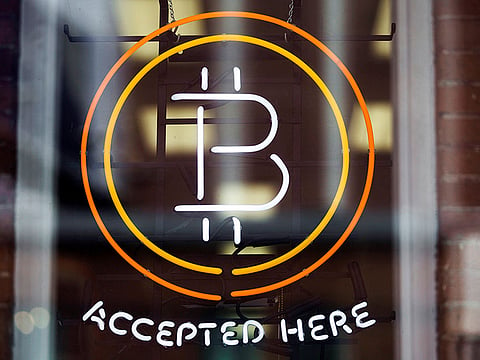Five most useful cryptocurrencies of 2021 – and it’s not Bitcoin or Dogecoin
The most useful cryptos are digital assets that demonstrate the most practical utility

Dubai: The best useful cryptocurrency of 2021 is a digital asset that demonstrates the most practical utility. Bitcoin (BTC) is a cryptocurrency star that climbed to an all-time high of $64,000 (Dh235,071.04) in mid-April.
Bitcoin even outperformed most best-performing company sectors, and there are reports that it’s coming to banks worldwide. Dogecoin, a meme token that launched as a joke, also shocked many as it climbed to an unprecedented peak of 70 cents on May 5.
There are a slew of crypto projects that are working on promising ventures that could potentially upend the cryptocurrency markets. They're not just stores of value; they offer practical services for businesses, developers, digital artists, and more.
What are the best cryptocurrencies in 2021?
1. Ethereum
The best cryptocurrency that offers best use is Ether: the digital currency of the Ethereum blockchain.
It is the second most popular cryptocurrency next to Bitcoin, but if you ask experts, Ether could gain enough traction to surpass Bitcoin thanks to the booming non-fungible token (NFT) market. NFTs are digital collectibles (e.g. music, artwork and tweets) that often run on the Ethereum network.
As celebrities like Eminem, Tony Hawk, Snoop Dogg and Rob Gronkowski cashed in on NFTs, Ether soared. Even the renowned US National Basketball Association (NBA) created a trading platform that lets fans trade NFT-based video highlights of their favourite players; it’s called ‘NBA Top Shot’.
Unlike Bitcoin, you have to pay “gas fees” to process transactions on the Ethereum blockchain. Gas fees compensate for the computing energy required to validate transactions. In other words, if you’re an artist who wants to turn your artwork into an NFT, you have to pay a gas fee ranging from $30 (Dh110.19) to $150 (Dh550.95).
The same is true for individuals who want to purchase NFTs. These fees are paid using Ether, which is a boon for Ethereum investors.
That being said, you can see why Ether’s price skyrocketed to more than $4,000 (Dh146,919) in May when it was trading at only $200 (Dh734.60) last year. NFTs such as Jack Dorsey’s first tweet, this quirky GIF of a Pop Tart-bodied cat, and the popular Disaster Girl meme all played a role in Ether’s sudden success.
One downside of Ethereum, however, is the blockchain's ridiculously high gas fees, which may turn off the general public. Ethereum is also slow in processing transactions.
2. Solana (Sol)
Priced at $36.98 (Dh135.83), an extremely promising cryptocurrency is Solana (Sol). The most popular blockchain protocols are proof of work and proof of stake. Solana uses neither. In fact, it uses a new protocol called Proof-of-History (PoH).
How is Proof-of-Stake different from Proof-of-Work mechanisms?
Proof of Work (POW) requires huge amounts of energy, with miners needing to sell their coins to ultimately foot the bill; Proof of Stake (PoS) gives mining power based on the percentage of coins held by a miner. The Proof of Work consensus algorithm involves solving a computational challenging puzzle in order to create new blocks in the Bitcoin blockchain. The energy consuming part is solving the 'hard mathematical problem' to link the new block to the last block in the valid blockchain. The Proof of Stake (PoS) concept states that a person can mine or validate block transactions according to how many coins they hold. This means that the more coins owned by a miner, the more mining power they have. Hence the name - Proof of Stake.
A new mechanism known as Proof-of-History (PoH) runs Solana
The PoH concept is a little complex, but to keep it short and simple, PoH is touted as being faster than PoW and PoS because it maintains its own clock (or cryptographic time stamp) to "prove" that time has passed.
Other blockchains, on the other hand, rely on a sequential production of blocks to prove a passage of time. This can cause some delay as the network waits for confirmation and consensus before advancing transactions.
Solana is also an Ethereum competitor. Many dApps (decentralized apps) run on the Ethereum network, but Ethereum has several issues, including slow transaction times and high gas fees. Solana, on the other hand, plans to offer a more scalable, faster network that Ethereum is struggling to offer.
Keep in mind, though, that Solana is still in an experiment phase. Experts pin Solana team to surpass Ethereum, but it has yet to prove that it can outperform the world's most popular crypto network (after Bitcoin).
3. VeChain (VET)
Widely viewed as ‘the best business-centric cryptocurrency to buy’, and currently priced at a low price of $0.07 (26fils), VeChain is a blockchain that targets several industries, including healthcare, logistics, automobile and also luxury fashion. In fact, the CEO of VeChain, Sunny Lu, is the former CIO of Louis Vuitton China.
VeChain was originally launched as a way to foil knock-offs of original business or corporate brands. How did it work? According to Decrypt, each product is given a unique identifier with sensors that track its progress throughout each supply-chain stage.
With this technology, companies can ensure its products are handled correctly and customers can verify their purchases are legitimate. Because VeChain uses blockchain technology, the data can’t be changed, which is a huge plus for businesses. If anything goes wrong on the supply chain (e.g. goods are shipped to the wrong place), the blockchain record will unveil where things went haywire.
VET is a cryptocurrency that lives on the VeChain network. The more VET an enterprise holds, the more priority it gets while using VeChain’s resources. VeChain also uses a token called VTHO, which pays for the power and energy needed to conduct transactions (like Ethereum’s gas fees). The downside of this two-token system is that it can confuse investors.
It’s also worth noting that VeChain already secured partnerships with established companies such as BMW.
4. Polkadot (DOT)
Polkadot is priced at $15.48 (Dh56.86). In the same way some games are exclusive to one platform, many cryptocurrencies are solely linked to one blockchain (e.g. ETH on Ethereum).
However, Polkadot is aiming to change that with a concept called cross-platform interoperability (CPI). CPI can be thought of as cross-platform play, but for cryptocurrencies.
Polkadot’s aims to unite independent blockchains under one network so that they can communicate and carry out operations together.
For example, a use case for CPI is a smart-contract (a self-executing contract with the terms of the agreement between buyer and seller being directly written into lines of code) event on Ethereum triggering a payment on the Bitcoin blockchain. The downside of DOT is that its CPI concept has not yet materialised into reality.
5. Cardano (ADA)
Coined ‘the best cryptocurrency for eco-friendly advocates’ and priced $1.42 (Dh5.22), ADA is a cryptocurrency that lives on the Cardano blockchain.
Ethereum co-founder Charles Hokinson founded Cardano in 2015, so it’s no surprise that, similar to Ethereum, Cardano aims to feature smart-contract functionality.
Cardano has several objectives; one of them is offering speedy cryptocurrency transactions. Bitcoin uses the proof-of-work (PoW) algorithm to validate Bitcoin transactions on the blockchain, which relies on a peer-to-peer network to mine new blocks. This process, however, is slow and wastes too much computing power.
Cardano, on the other hand, uses the proof-of-stake (PoS) algorithm. Like mentioned above, what you need to know is that PoS is quicker and consumes less energy than the electricity-guzzling PoW method.
Another interesting facet of Cardano is that it prides itself on being a peer-reviewed blockchain, meaning any updates to the platform are thoroughly researched and validated by experts.
One thing to consider about Cardano, however, is that it’s still in development; it doesn’t have smart contract capabilities yet.
Sign up for the Daily Briefing
Get the latest news and updates straight to your inbox









